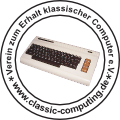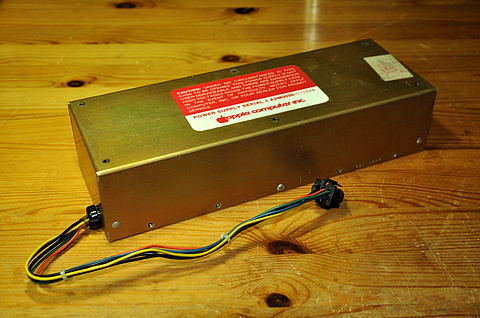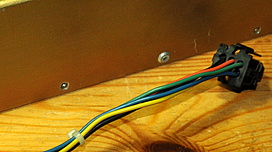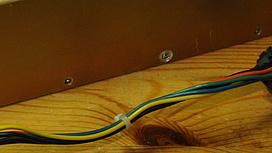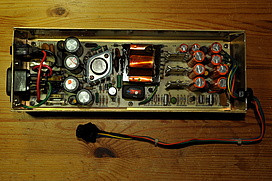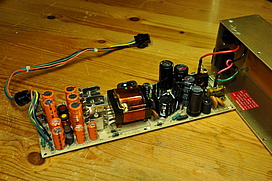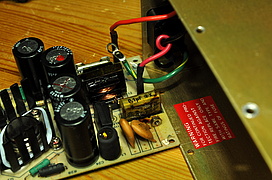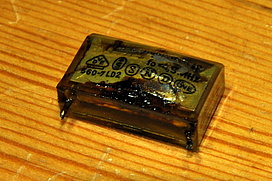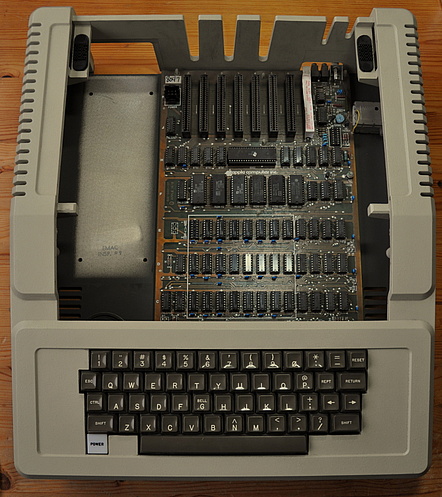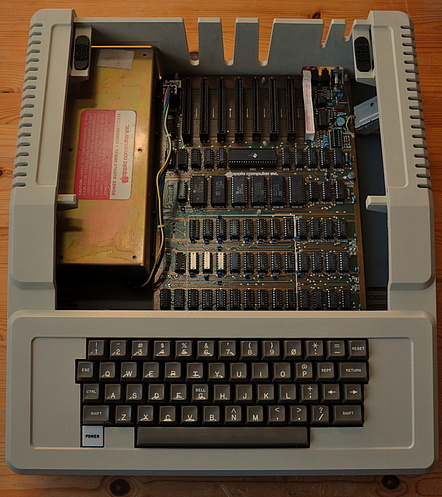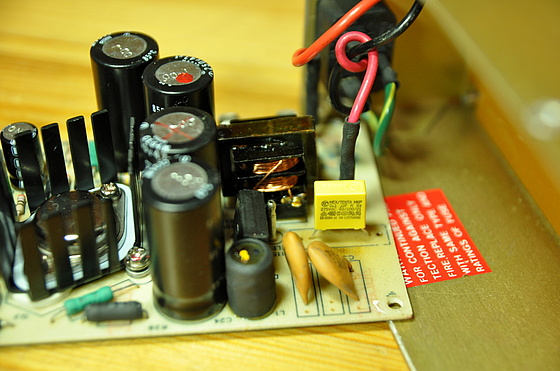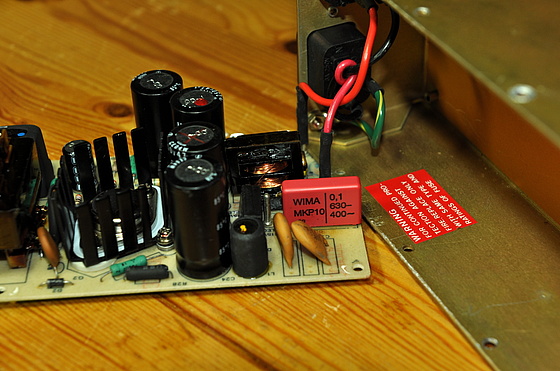Power to the Apple!
Never leave your vintage unattended!
One day we decided to tidy up the upstairs hobby room which serves us as a combined study and workshop, and which in addition contains my vintage computer mini-museum. In order to provide the kids with some entertainment while we were moving stuff and boxes around, I switched on some of my vintage treasures and let the little ones hit the keys. After a while we all left the room to follow some other business, leaving the old computers turned on.
When I eventually returned to the room, first thing I realized was some very unpleasant tang, like burning chemicals. (All right, being trained as a biochemist, I'm aware that virtually everything material surrounding us belongs to the realm of chemistry, and that there are chemicals which burn without the slightest trace of a smell...) I quickly realized that it was the good old 1979 Apple II europlus which was emanating this remarkable stench. Immediately I hit "emergency off" on the multiple socket which powered the Apple and its peripheries and opened all windows. (Real windows, not graphical ones! ;)
It was pretty obvious that the problem resided within the Apple's power supply unit. But after dismounting it from the Apple's case it turned out surprisingly difficult to open it -- I finally had to drill open a hand full of rivets before I could disassemble its metal casing
In order to further disassemble the PSU, some more screws had to be removed. And after a (pretty long!) while I even figured out how to loosen the wires' strain-relief. Identifying the evil-doer was much quicker, though -- a broken capacitor (line filter capacitor C1, according to the schematics) obviously had spilled some unpleasant liquid onto the PCB. (From an aesthetic point of view, this broken fellow had much less appeal than the exploded capacitor I once found in a Sharp MZ-80's PSU...)
The PSU board obviously needed a new capacitor and it could also use some cleaning. So since I was already at it, I decided to give the whole Apple a treat in the dishwasher. Just with the dirty old Sharp, I used a short, low-temperature cleaning program and added a few (!) drops of regular washing-up liquid instead of dishwasher powder.
After 3 days on the radiator I dared re-assembling the unit -- of course not without soldering a shiny new replacement capacitor onto the PSU board. When my hand finally reached for the power switch, I began sweating and my heart beat faster, but -- tataa! -- all went well, the Apple was back to normal operations!
N.B.
As I learned after some friendly comments in the Classic Computing and the Vintage Computer Forum, I initially used an unsuitable capacitor for my repair attempt. Though being much prettier due to its raspberry color, it lacked X2 specification, which obviously is mandatory for line filter capacitors in usage scenarios like the one described.





